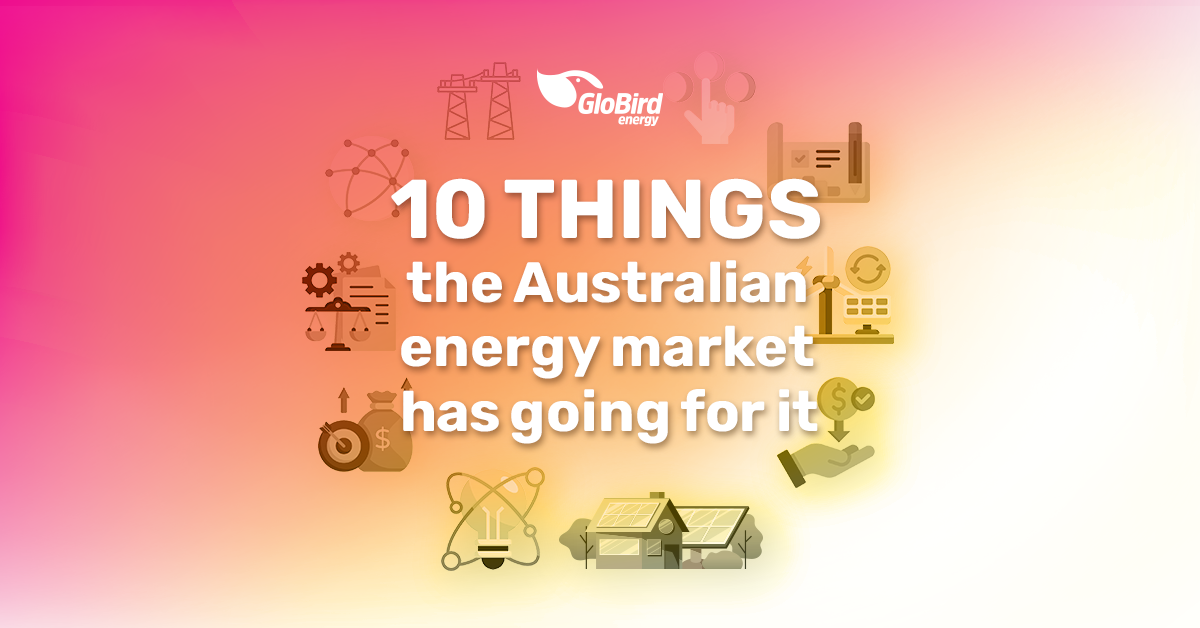At GloBird Energy, we always have an eye on what the future might hold. We take a closer look at things that are already starting to happen around the world and focus a bit more on what we will be able to improve as technology inevitably advances.
Our approach is probably not all that unusual because it’s what human beings have done throughout history: imagining, experimenting, discovering, investigating, innovating, working to understand, and simply discussing what might be possible.
However, we don’t want to be so focused on potential “room for improvement” that we fail to appreciate or make the most of what’s being done well. That would be the definition of taking your eye off the ball.
Change is constant … and desirable
While big changes can be daunting, it’s important that we make consistent and regular progress in all areas. Sticking with the old ways of doing things simply because we’re comfortable with them isn’t a very good argument against progress.
There’s no doubt that Australia’s energy market is in the midst of change. At the heart of the changing energy landscape, not only in Australia but globally, is the challenge of balancing economic efficiency with environmental responsibility.
Within that big challenge are quite a few smaller ones, but the good news is that we’re in decent shape right now, so we’re not faced with climbing the mountain from the very bottom.
Here’s why we’re in a good position to climb the mountain
The National Electricity Market (NEM), covering the eastern and southeastern states, is one of the world’s most complex energy systems, efficiently serving a vast area with very few “hiccups”.
That’s something we should be proud of and not take for granted. In fact, we’re going to put it at the top of our list of 10 things the Australian energy market has going for it (even though the rest are in no particular order of priority).
1. A large interconnected system
Australia’s east coast boasts the longest interconnected electricity system in the world, allowing for efficient energy transfer and increased stability within the NEM.
2. Renewable energy leadership
Australia is a global leader in renewable energy adoption, particularly in rooftop solar installations. With over 3.6 million households and businesses having installed solar panels, we enjoy some of the highest per-capita solar penetration rates globally.
3. Strong regulatory oversight
The Australian Energy Regulator (AER) plays a crucial role in regulating energy networks by setting revenue caps and ensuring network reliability and safety standards.
4. Thoughtful planning
The Australian Energy Market Operator (AEMO) provides a roadmap for the energy transition, including essential infrastructure planning and analysis of market dynamics.
5. Grid reliability
AEMO has developed sophisticated forecasting and grid management capabilities, successfully integrating variable renewable energy sources while maintaining system stability. The grid’s technical performance compares favourably with international standards.
6. Market competition
The deregulated energy market has delivered genuine competition in most states, giving consumers the power to choose their electricity and gas retailers.
7. Increased consumer choice
Market competition has driven innovation in pricing structures, customer service, and product offerings. Consumers can now select from fixed-rate plans, green energy options, or time-of-use tariffs that match their consumption patterns.
8. Economic efficiency
The merit order dispatch system ensures that the cheapest available electricity is used first, helping to keep wholesale prices as low as possible while meeting demand.
9. Targeted investment
Market mechanisms more often than not result in investment being directed toward the most cost-effective generation and infrastructure projects.
10. A culture of innovation
The Australian energy market has become a testing ground for cutting-edge technologies, including large-scale batteries, virtual power plants, and demand response programs. Australia has shown a willingness to embrace technological solutions to energy challenges.
It’s all a bit of a balancing act
Australia might be in a much stronger place right now than many other countries, but our domestic energy landscape still faces the same challenges as other developed economies navigating the energy transition.
Our strengths in competition, innovation, and renewable energy integration provide a solid foundation for addressing current challenges.
We’ll take a look at some of those challenges next time but, at least for the moment, let’s recognise that Australia’s energy market has demonstrated remarkable adaptability and resilience throughout its evolution.
Think how far we’ve come in the past 25 years, let alone the past 50 or 100. Then imagine, with the increasing pace of technological innovation, advancement, and adoption, where we could be by 2050.
We’re feeling pretty positive and excited about what’s coming.
Wanna know some shocking facts about electricity? Discover 25 fascinating things about electricity, you didn’t know!
